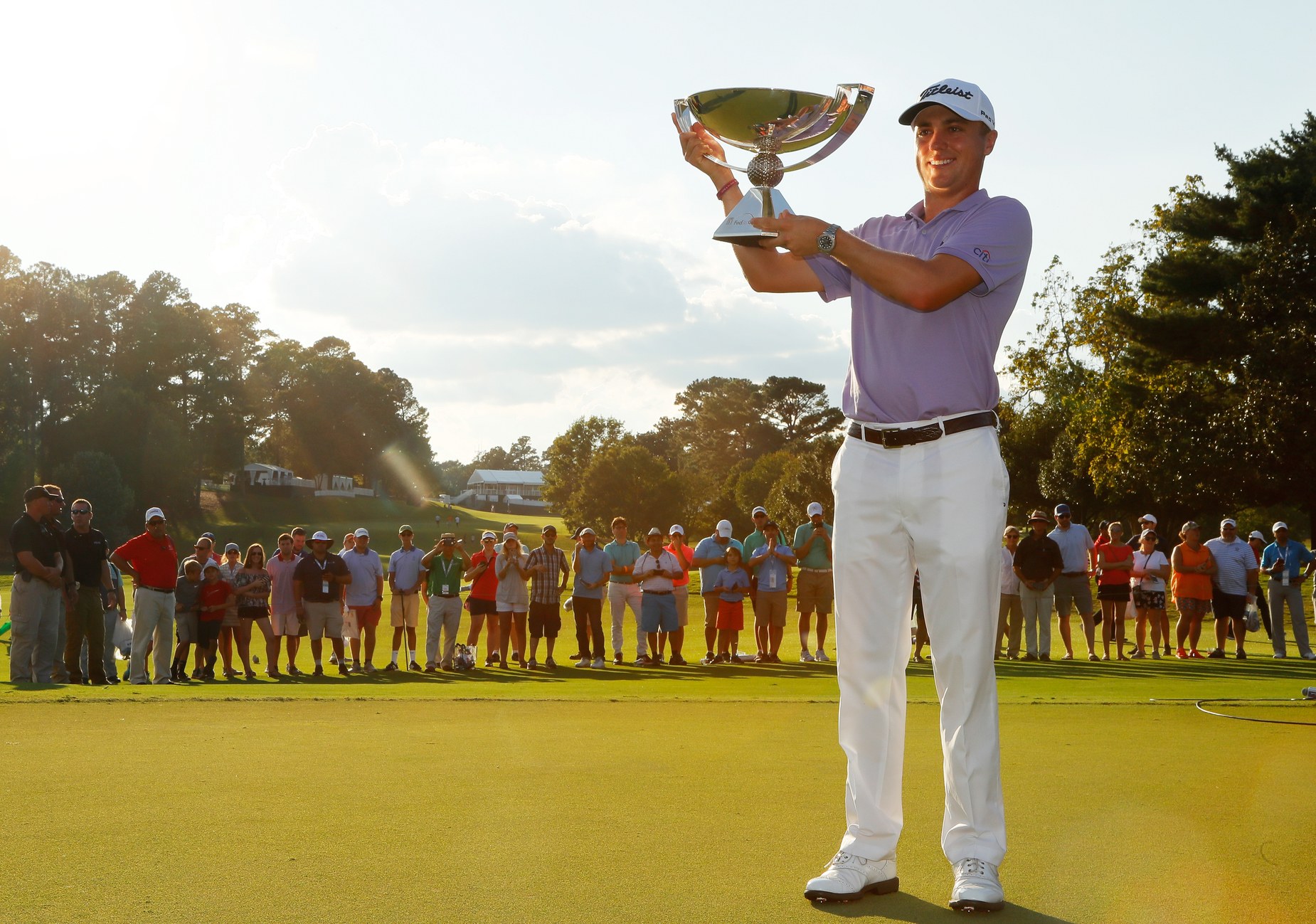Unless there’s some kind of delay – as with the announcement earlier this year of the US PGA Tour’s new schedule – the tour is expected to announce a new format for the FedExCup Playoffs this week. The setting – East Lake Golf Club, host of this week’s Tour Championship – makes sense.
Chances are good though, based on reports of the planned changes, that the tour still won’t get it right. It has been trying – sort of – for 12 years now to get it right. The problem is it doesn’t REALLY want to get it exactly right. Which is sad, because it shouldn’t be that difficult.
A little background: Tim Finchem deserves credit for many achievements during his 22-year stint as PGA Tour commissioner. But there’s no doubt that the PGA Tour Playoffs – or, as he would insist on calling them, the FedExCup playoffs – were his masterstroke.
They were born of some desperation. The Tour Championship had been created in 1987 with the notion that at least once each northern autumn golf’s stars would come out and play again, post-Majors. Only 30 players qualified and the money was – for those days – huge: $US2 million dollars divided among the 30 participants with no cut. Everyone took home a cheque. A nice deal.
Tom Watson won $360,000 for winning the first one, about double the typical payout to tour winners at the time. By 2006, the purse was up to a total of $7 million, with Adam Scott talking home the $1,170,000 first prize.
There was, however, a problem. The top players weren’t inclined to take the clubs down in late October or early November for a week when they could be resting, spending time with their families – or playing overseas for lucrative appearance fees that paid them big bucks regardless of performance.
Somehow, with the economy in reverse, Finchem convinced FedEx to go all-in on a 10-year contract in which it committed to pay out $US35 million in bonuses for the players who qualified for the newly created four-tournament “playoffs”. We’ll return to those quotation marks shortly; they’re intentional.
Five years in, the contract was adjusted to change the official name for the playoffs from PGA Tour Playoffs to FedExCup Playoffs. Almost as important, the top 125 players who reached the postseason off the points list qualified as exempt players for the next season. Prior to that, the moneylist – which didn’t end until after the playoffs, during the so-called ‘Fall Finish’, decided the top 125.
Finchem’s plan worked. The money was so big that even golf’s multimillionaires couldn’t resist. Four tournaments with $8 million payouts plus the bonus pool – with the winner receiving $10 million – was impossible to resist, even for Tiger Woods and Phil Mickelson, golf’s two biggest names at that moment.
There were some predictable early headaches. Many players complained that the $10 million shouldn’t be handed to the winner as a retirement annuity but as hard cash. Mickelson was the loudest of the complainers. For year two, the tour and FedEx changed the payout to $9 million in cash, $1 million in annuity.
Woods, still the dominant player in the game, won the first FedExCup trophy. Then, when photographers asked him to kiss the trophy, he refused. Clearly, he wanted people to understand that the money was nice, but you only kiss Major championship trophies. One wondered who was more upset by that – Finchem or the FedEx people.

Then, in year two, Vijay Singh clinched the championship in week three, meaning he didn’t even have to finish the allegedly climactic Tour Championship to collect the bonus and the trophy.
That brought about another change to the points system – it had been changed after 2007 to make it more difficult for a player to win the $10 million without playing in all four events – though it still wasn’t impossible. In fact, Jim Furyk won the bonus in 2010 even though he was disqualified from the opening tournament because his alarm didn’t go off and he missed his pro-am tee-time.
The post-Singh change made it impossible for anyone to clinch the Cup prior to East Lake. That was good. The problem was the system was so contrived and confusing that the most important person at East Lake each Sunday was NBC’s Steve Sands, who stood in front of a whiteboard and explained the implications of one more birdie or one more bogey on the outcome.
If Sands understood what was going on, he was often the only one.
In fact, when Bill Haas won the tournament in 2011, he walked onto the victory platform, shook hands with Finchem and said, “So who won the FedExCup?”
Face drained of colour, Finchem answered, “You did.”
How’s that for drama? The winner didn’t even know he’d won.
Now, seven long years after that humiliating moment, the tour is finally going to change the system (again). As first reported by Doug Ferguson of the Associated Press – whose tour sources are usually impeccable – the tour is going to create a separate bonus pool for the so-called regular season, with $US3 million going to the winner. Ferguson also reported that the plan is to let the points leader start the Tour Championship at 10-under par with everyone else chasing from behind.
That’s a terrible idea. The notion of a regular season champion and bonus pool is a good one, but it should also include changing the regular season points system.

Because it wants so badly to convince the public that the events it controls are really important, the tour barely gives more credit to those who win a Major than to those who win the John Deere Classic or CareerBuilder Challenge.
The winner of a regular tour event receives 500 FedExCup points. Those who win a WGC event – also part of the tour – receive 550 points. And, in a show of sheer gall, the tour awards 600 points to the winner of the Players Championship – the same number of points a player receives for winning a Major championship.
That’s ridiculous. A recent poll asked tour players if they would rather win 10 times on tour or one Major. By a margin of not quite two-to-one, players said they’d take the 10 wins – mostly for the money. Some said it would depend on which major. I’d bet if the question had been three wins or one Major, the answer would have been about 10-to-one (or more) in favour of the Major.
Which is why a Major should count for at least three times as much as a regular tour win in the points system. Winning a major is so much harder than a regular tour event: the quality of the field; the pressure on Sunday; the understanding that you are playing for history, not just money.
It is ludicrous that Brooks Koepka won two Majors this year and goes into the Tour Championship in seventh place on the points list. Tony Finau, who has not won anywhere, is third. Koepka could add the Tour Championship to his résumé this week and not win the FedEx Cup. Seriously?
Most important, though, is restructuring the “Playoffs”. First, make them true playoffs. In every other major sport – football, basketball, baseball, ice hockey – everyone begins at zero in the postseason. Yes, there’s home-field advantage for the teams with the best record and American football gives its four best teams a first-round bye while baseball makes the four wildcard teams (of 12 playoff qualifiers) play one game to advance to the final eight.
But no one begins a game with a lead. The NFL’s Super Bowl is played at a neutral site. In 2008, the 18-0 New England Patriots did not start out with a 14-0 lead on the 12-7 New York Giants. The Giants won.
So, once you crown a regular season champion in golf, everyone should start at zero. With the playoffs becoming three tournaments instead of four beginning next year with the new timing of the schedule, this would ratchet up the pressure each week.
Let everyone play for two weeks – perhaps cut the qualifers to 100 with all 125 sharing in the regular-season bonus pool – and then let the top 32 advance to Atlanta. Sure, the sponsors in Atlanta and NBC might moan about some stars not making it there but that already happens anyway. See “Spieth, Jordan” this year. See “Mickelson, Phil” a year ago. Not to mention “Woods, Tiger” the past four years. They still held the event.
I say 32 players because the Tour Championship should be matchplay (more moans from sponsors and TV). That would make it different than all but one tournament on tour and every day would have huge drama – the way the WGC–Match Play used to have before TV convinced the tour to go from straight knockout to pool play.
There would be higher drama because of what would be at stake: not a Major title, but a big one with massive money also on the line each day. The last match 18 holes mano-a-mano for $10 million with no constant cutting to Sands and his whiteboard could be fabulous, if not quite historic.
Heck you might be able to convince Woods to kiss the trophy if he were to win. Now that would be historic.

